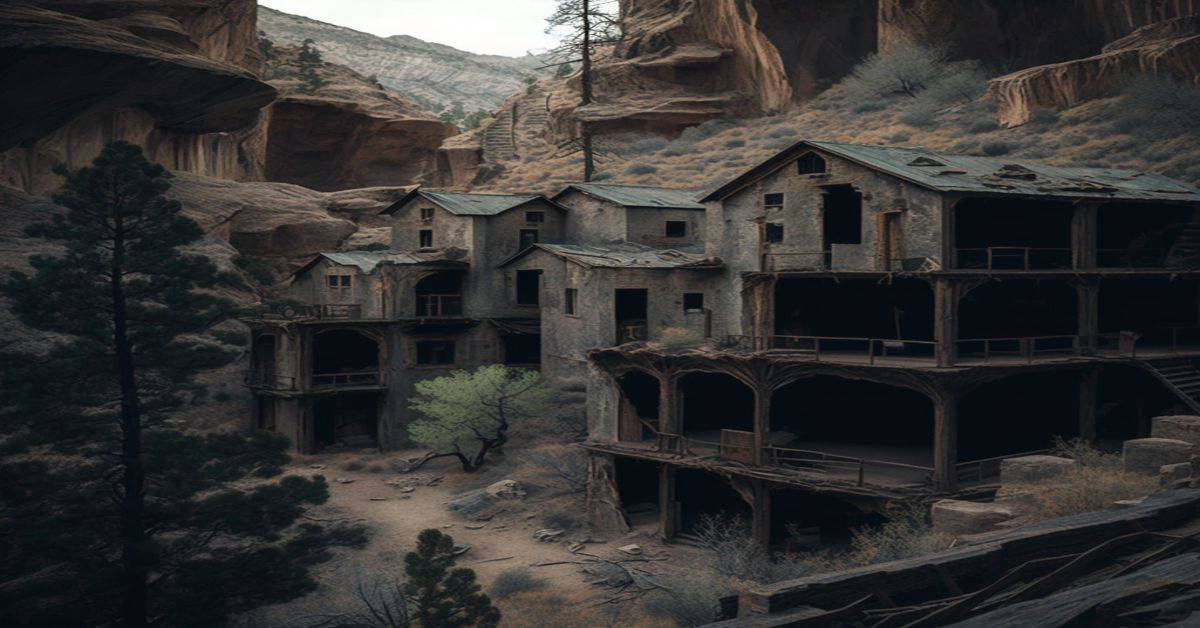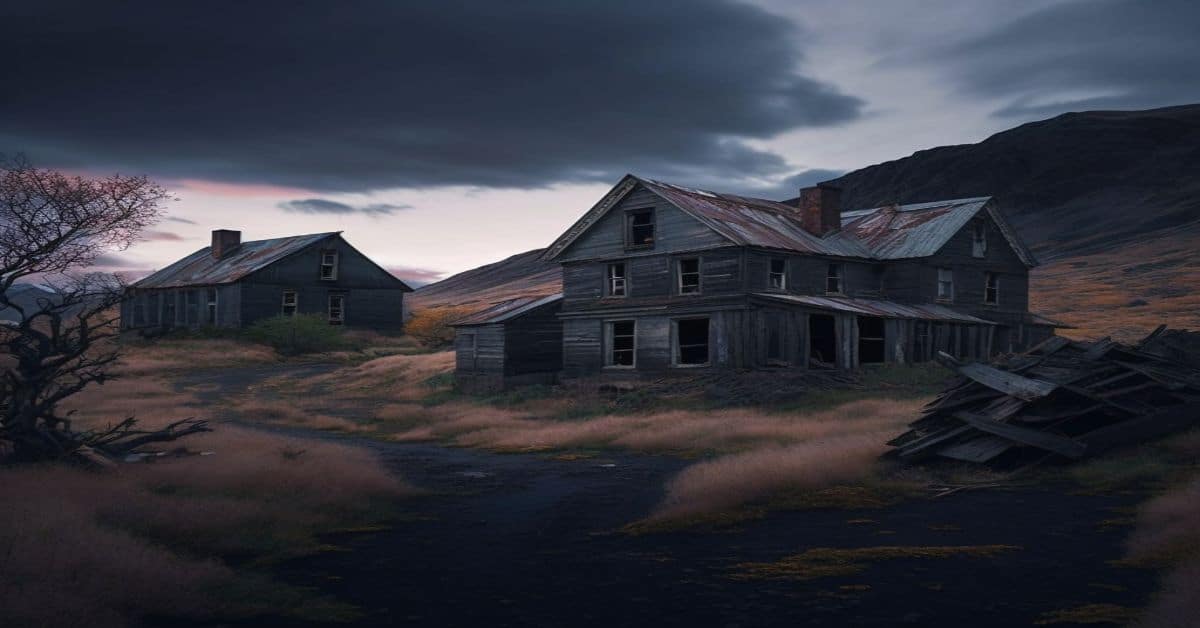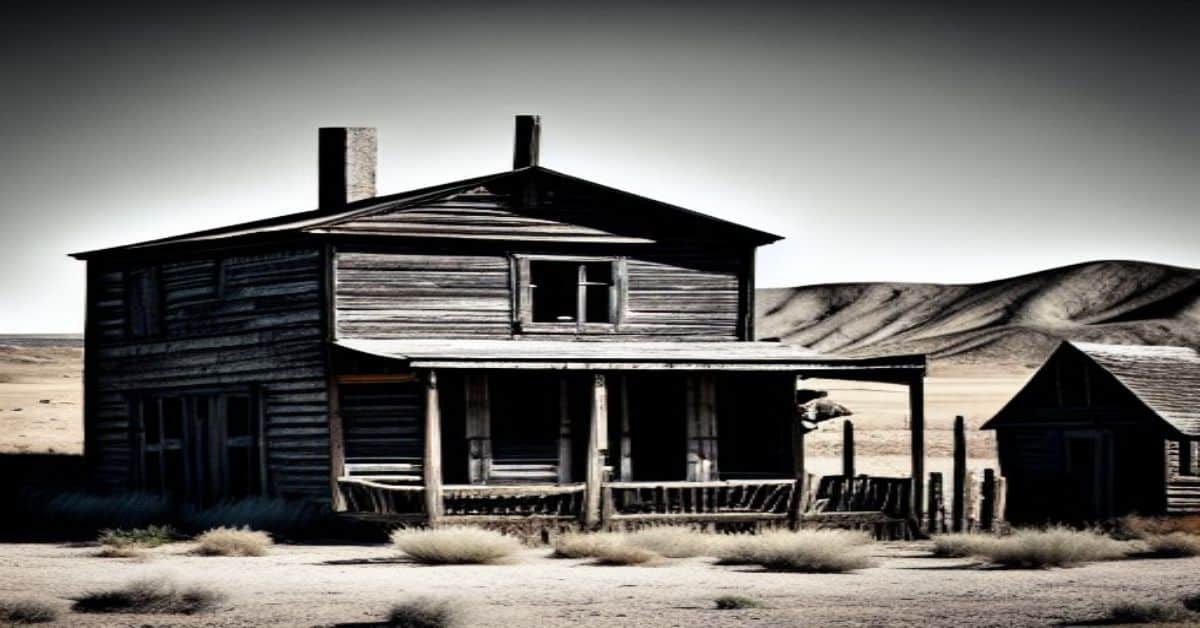Nestled in the remote eastern part of Utah lies Lucin, a once-thriving railroad stop turned ghost town. Its history dates back to the early 1900s when the town served as a crucial stopover for steam engines traversing the vast desert landscapes of the American West. Despite its abandonment, Lucin still offers visitors a window into its past with a standing home, phone booth, and a piped mountain water oasis.
Today, Lucin is a nearly forgotten place, with no permanent residents and most of its structures destroyed by time and natural elements. However, for those seeking a glimpse into the region’s rich history, a visit to Lucin is a must.
The town’s unique location and the surrounding landscape, including the nearby Sun Tunnels sculptures, make it an ideal destination for adventure seekers looking to experience the rugged terrain of the American West. Join us on a ghost town adventure and uncover the secrets of Lucin.
Key Takeaways
- Lucin is a deserted ghost town in eastern Utah that was once a significant railroad stop for steam engines.
- Although most structures are destroyed, visitors can experience a glimpse into the past of a once-thriving community with a standing home, phone booth, and a piped mountain water oasis.
- The town’s unique location and surrounding landscape make it an ideal destination for adventure seekers, with nearby Sun Tunnels sculptures adding to the unique experience of exploring this ghost town.
- Structures that remain reflect the resilience of those who built and sustained this community, and offer visitors a glimpse into the region’s rich history and the impact of railroads on the American West.
Location and History
Located in Utah, Lucin was once a significant railroad stop in the 1800s for steam engines. Later, it became home to a group of children turned retirees. However, over time, the town became deserted, with no current residents and most structures destroyed.
Despite its current state, Lucin’s significance to nearby communities is still felt today. Lucin’s impact on nearby communities was most notably seen in its water source. Water was piped in from a nearby mountain, providing a vital resource to the area. Additionally, trains still pass by and arrange their cars on nearby tracks, demonstrating the continued importance of transportation in the region.
Today, Lucin remains a fascinating relic of the past, offering visitors a glimpse into the area’s history and the impact of railroads on the American West.
Current Status and Structures
The remnants of Lucin stand as a testament to its past, with only a handful of structures remaining amidst the desolate landscape. These structures include a lone standing home, a phone booth, grain cellars, and an oasis of piped mountain water. The water source, piped from a nearby mountain, continues to flow and provides a lifeline for any travelers passing through the area.
The grain cellars, once used to store crops, now stand empty and abandoned. Although not in use, the phone booth serves as a reminder of a time when communication was more difficult and isolated. The lone standing home starkly contrasts the surrounding barrenness, symbolizing the determination of those who once lived in Lucin.
Despite its current state as a ghost town with no current residents, Lucin still holds a certain allure for those who seek adventure and exploration. The remaining structures speak to a time when Lucin was a thriving community, and the water source is a vital resource that sustains life in the area.
Visitors to Lucin can experience the solitude and isolation of the desert landscape, imagining what life must have been like for those who once called this place home. The remaining structures serve as a reminder of a bygone era, and a reflection of the resilience of those who built and sustained this community.
Visiting Lucin Today
Visitors to the remnants of Lucin can experience a glimpse into the past of a once-thriving community. The ghost town offers a unique opportunity to explore the scenery, with a few remaining structures and a vital water source starkly contrasting the barren desert landscape. The town’s piped water source remains a significant attraction, with an oasis of fresh mountain water that is hard to come by in the desolate surroundings.
Explorers can find hidden treasures in Lucin, with the remaining structures providing a glimpse of the past. The old phone booth and grain cellars testify to the town’s history as a railroad stop for steam engines. The cold room and old stamp mill remains offer a glimpse into the town’s industrial past.
Visitors can also arrange to see the nearby Sun Tunnels sculptures, adding to the unique experience of exploring this ghost town.
Frequently Asked Questions
What caused Lucin to become a ghost town?
Lucin became a ghost town due to a decline in mining activity and changes in transportation, specifically the shift from steam engines to diesel locomotives, leading to the abandonment of the town and its structures.
Are there any paranormal activities reported in Lucin?
Paranormal investigations have not been conducted in Lucin, but local legends suggest that the ghosts of former residents haunt the town. There are stories of unexplained sounds and sightings, adding to the eerie atmosphere of the abandoned town.
What is the nearest town or city to Lucin and how far is it?
Nestled in Utah’s remote desert, Lucin’s nearest town is Montello, located to the west of the ghost town. The distance between the two towns is approximately 20 miles, making Lucin an isolated destination for adventurous travelers.
Has Lucin been used as a filming location for any movies or TV shows?
Lucin has served as a filming location for several famous productions, including the 1999 sci-fi movie “The Thirteenth Floor”and the television series “Touched by an Angel”and “Promised Land.”Numerous commercials have also been filmed in the area.
What wildlife can be spotted in the area surrounding Lucin?
Desert creatures such as coyotes, jackrabbits, and rattlesnakes can be spotted in the area surrounding Lucin. Birdwatching enthusiasts may enjoy observing species such as the sage thrasher, Brewer’s sparrow, and prairie falcon in the surrounding desert landscape.


